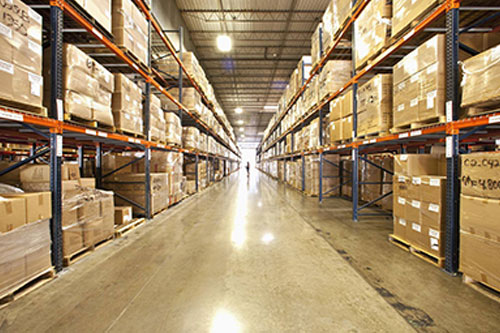GST to boost logistics sector
Dated 12th July, 2016
 A unified goods and services tax (GST) will bring down logistics costs in the country by up to 20 per cent enabling the sector to grow at a CAGR of 15-20 per cent till 2020/21, according to a study by Care Ratings.
A unified goods and services tax (GST) will bring down logistics costs in the country by up to 20 per cent enabling the sector to grow at a CAGR of 15-20 per cent till 2020/21, according to a study by Care Ratings.
The logistics industry is primarily categorized into four segments -- transportation, warehousing, freight forwarding and value-added logistics. The sector has been beset with problems ranging from a bulbous and complex tax structure, inefficient customs clearance processes and procedures to poor back end infrastructure. Multiplicity of taxation across the 29 states means freight moves slowly and is taxed multiple times in the country. Transportation alone accounts for 60 per cent of overall logistics cost in India.
"Currently, third party logistic service providers (3PLs) have warehouses located near major distribution centres of its key clients (industries) irrespective of its geographic disadvantage mainly to avoid interstate taxes. However, post GST implementation 3PLs are expected to build integrated warehouses at logistic suitable locations," says Anila Gode, Deputy Manager at Care Ratings.
The biggest beneficiary of lower logistics cost would be the consumer durables sector where warehouses are built in different states to avoid interstate tax. Currently there are 20-30 warehouses in the country per company and additional 20-30 carry and forwarding agents that makes the supply chain longer and inefficient. According to CRISIL Research's assessment, potential saving for the sector could be in the range of 30 per cent of logistics costs from current levels of 7-8 per cent of sales. "It shall make logistics firms more efficient besides reducing their actual requirement for commercial vehicles and will help in lowering product prices by approximately 10 per cent," says Vineet Agarwal, Managing Director, Transport Corporation of India.
The proposed GST that was passed in the lower house of the parliament in May 2005 -- it has been held up in the upper house ever since -- is a consumption based tax. It subsumes multiple taxes levied by both the Centre (excise duty, countervailing duty and service tax) and state (value-added tax, octroi and entry tax, luxury tax, etc.).
It means same level of taxation on a specific product or service across the entire country irrespective of being manufactured and sold in different states. The planned dual GST model (central GST and state GST) proposes to replace around 29 state and federal taxes and tariffs for a single tax at the point of sale. The current combined Centre and state statutory rate for most goods works out to 26.5 per cent (Cenvat of 14 per cent and VAT of 12.5 per cent), whereas post GST implementation it is expected to reduce to standard rate of about 18-21 per cent.





